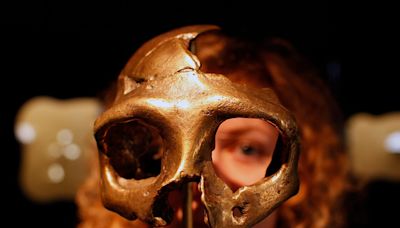Search results
4 days ago · evolution, theory in biology postulating that the various types of plants, animals, and other living things on Earth have their origin in other preexisting types and that the distinguishable differences are due to modifications in successive generations.
Evolution is the change in the heritable characteristics of biological populations over successive generations. It occurs when evolutionary processes such as natural selection and genetic drift act on genetic variation, resulting in certain characteristics becoming more or less common within a population over successive generations.
Evolution 101. An introduction to evolution: what is evolution and how does it work? The history of life: looking at the patterns – Change over time and shared ancestors; Mechanisms: the processes of evolution – Selection, mutation, migration, and more; Microevolution – Evolution within a population; Speciation – How new species arise
: descent with modification from preexisting species : cumulative inherited change in a population of organisms through time leading to the appearance of new forms : the process by which new species or populations of living things develop from preexisting forms through successive generations.
May 23, 2024 · human evolution, the process by which human beings developed on Earth from now-extinct primates. Viewed zoologically, we humans are Homo sapiens, a culture -bearing upright-walking species that lives on the ground and very likely first evolved in Africa about 315,000 years ago.
Evolution is a process that results in changes in the genetic content of a population over time. There are two general classes of evolutionary change: microevolution and macroevolution.
Oct 19, 2023 · The theory of evolution is a shortened form of the term “theory of evolution by natural selection,” which was proposed by Charles Darwin and Alfred Russel Wallace in the nineteenth century.
Apr 16, 2024 · Evolution 101. An introduction to evolution: what is evolution and how does it work? The history of life: looking at the patterns – Change over time and shared ancestors; Mechanisms: the processes of evolution – Selection, mutation, migration, and more; Microevolution – Evolution within a population; Speciation – How new species arise
Broadly speaking, evolution is a change in the genetic makeup (and often, the heritable features) of a population over time. Biologists sometimes define two types of evolution based on scale: Macroevolution, which refers to large-scale changes that occur over extended time periods, such as the formation of new species and groups.
Evolution is the principal scientific theory that biologists use to understand life and is used in many disciplines, including medicine, psychology, conservation biology, anthropology, forensics, agriculture and other social-cultural applications.




